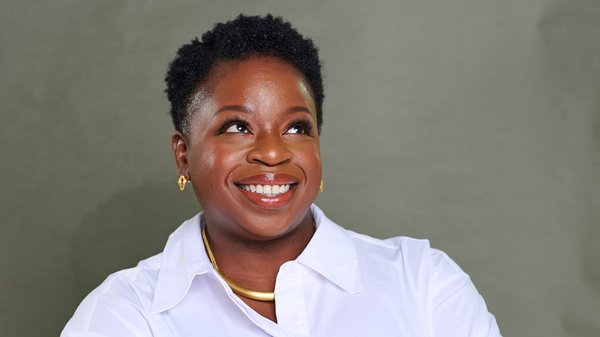Contagious IQ exclusive excerpt: Richard Rumelt on strategy /
Ignore your mission statement, stop compromising and start arguing. Strategy guru Richard Rumelt has some strong opinions on why picking your battles and ignoring the wishes of others can be the most direct route to success.
Alex Jenkins
/
Richard Rumelt is a titan of strategy. Not only has he taught the subject at Harvard Business School, Insead and UCLA, he was the first person to uncover a statistical link between corporate strategy and profitability. He’s brought his knowledge to bear while working directly with companies ranging in size from startups to multinationals, and is also the author of Good Strategy/Bad Strategy: The Difference and Why it Matters – its clarity of thought, practical advice and detailed case studies making by far one of the most read and recommended books by Contagious staff.
Following the release of his new book, The Crux: How Leaders Become Strategists, Contagious Managing Partner Alex Jenkins sat down with Rumelt to find out why strategy is a creative endeavour, how to identify the critical challenges and why your mission statement won’t stop you from falling into the dustbin of history.
Before we get down into the detail, could you explain how you personally define strategy?
A strategy is a design of action and policy that’s aimed at surmounting a high-stakes challenge. It’s a way of dealing with a problem. Sometimes the problem is an opportunity that’s maybe not the easiest to grasp. ‘We’re outnumbered. What do we do?’, ‘They’ve attacked. How do we respond?’, and a good strategy has certain critical elements that have to be there. What I call the kernel of strategy has three elements in it: a diagnosis, a guiding policy, and it has coherent action. If you’re leaving one of those out, it’s not a strategy.
So there has to be an understanding of the nature of the situation, a diagnosis. There has to be some guiding policy – a sense of ‘Here’s the direction we’re trying to move in’. Then there has to be coherent actions, actual stuff you’re going to do pretty much now or in the near future. And coherent means that the actions don’t fight with each other or cancel each other out, which is often the case in large organisations.
Richard Rumelt
Is that cancelling out something you see a lot of?
Sure. Look at President Biden who wants us to use less fossil fuel. When the price of gas goes up, he should be applauding and saying, ‘People are going to use less gas.’ Instead, he’s tearing his hair out trying to figure out how to make gas cheaper. So his policy objectives and his political objectives are fighting each other, which produces incoherent action.
At Contagious, we see Good Strategy/Bad Strategy as pretty definitive in terms of strategy. What does The Crux add to that?
It’s much more about a challenge-based approach. The kernel, with its diagnosis, guiding policy, and action, doesn’t explicitly say, ‘You’ve got to be working with challenges’. The basic mistake that organisations and leaders make is they begin to conflate having a strategy with having ambitious goals. But unless you’ve faced up to the fact that you face difficulties, that there’s an impediment between you and your ambition, then it’s hard to have a strategy.
Richard Rumelt
Related to having ambitious goals, I know you’re pretty dismissive of company mission statements and visions, saying you don’t need them to run a business. Why is that?
It goes back to Peter Drucker [the influential management consultant], who mistakenly equated strategy with having a mission that could inspire the employees to put some values ahead of their own personal satisfaction, which is basically what we think leadership is in some sense. We’re asking people to sacrifice for the common good, for the greater good, or whatever. And there are consultants that will help you with a value statement, or a mission statement, and purposes and then goals, and then somewhere along the bottom come strategies.
Microsoft has a mission statement of ‘To empower every person and every organisation on the planet to achieve more’. Nokia had a mission statement of ‘To help everyone everywhere achieve their goals’. That mission statement of Nokia’s didn’t stop it falling into the dustbin of history. When things got tough, it collapsed, and so what’s the point of the mission statement?
The word mission comes to us from the church. It comes to us from the idea it’s a calling. ‘We’re going to send you out on a mission to convert these people to Christianity.’ It’s important for leaders to espouse values and ideas that inspire people. That’s leadership. But you’re not going to deduce a strategy from your mission. The strategy is how you’re dealing with a specific challenge.
Something that I think confuses a lot of people is that good strategic goals are the outcome of strategy, not its input.
That’s right.
But I suspect many people think it’s the other way around. They set a wishlist of goals, and the strategy is somehow a roadmap to get to those outcomes.
When the military train, they have this idea that strategy is the bridge between policy objectives and resources. How do you connect the policy objectives to our capabilities? That’s the strategy.
But I asked them, ‘What if the policy objective is stupid?’ And they don’t know what to say, because the military is supposed to do whatever the leader tells them to do. You can’t have a strategy to accomplish a dumb or an infeasible objective. So one of the things that we want to do in strategy is to tackle challenges that we can overcome.

So if you start with a desired outcome, then you’re starting in the wrong place to begin with?
When I was 25, I wanted to marry a beautiful, talented woman. I wanted to climb the highest mountains on the planet. I wanted to be a successful teacher. I wanted to buy a townhouse on the Île Saint-Louis. I had a list of ambitions. Everybody has ambitions. Every country. Every company. So are those foolish? No, they’re not foolish. That’s the vital energy that propels us forward in life.
But if we look at our ambitions, and we look at the situation we’re in, and what’s holding us back from achieving any or all of them, there’s usually some binding constraint somewhere that we could actually attack. ‘Yes, I want to marry a beautiful talented woman, but I don’t know any women right now. How can I fix that?’ Strategy is aimed at accomplishing one of your ambitions, by overcoming what’s standing between you and that ambition. But it’s complicated to do that. You have multiple ambitions, multiple challenges. You have to choose which battle you’re going to fight and so the fundamental thing about strategy is focus. It always has been.
Do you have a recommended method to help people identify the most critical challenge to work on?
The best that we have is argument. As humans, when it gets really serious – ‘Did Bob murder Betty?’ – we go to court and we have a professional arguer argue, ‘Yes, he did.’ And we have another professional arguer argue ‘No, he didn’t.’ That’s how we deal with things in a formal way. But almost nobody does that.
I get people to argue about how we can solve a problem, with people offering different opinions. And if they’re all in agreement, then we push deeper into what they’re assuming about the nature of the challenge. In the end, it’s human beings doing the best they can to figure out how to solve a difficulty. People are not comfortable with that.
There’s a sense that you state the problem and the CEO says, ‘Here’s what we’re going to do.’ That works when you’ve faced situations like this before. But with something more novel and gnarly, that quick draw is often the wrong draw.
Richard Rumelt
You mention a few times in your books that often the main challenge facing a business is really internal wrangling rather than external forces.
If you look at the strategy literature most of it defines strategy in business terms, ie, product, market, competition, and what advantage do we try to have? What’s missing from that formulation is the organisation itself because, if the organisation’s not functioning well, that’s got to be a strategic challenge. It’s a problem that has to be solved. At least half the time I work with companies, it’s the main challenge.
I tell a story in the book of a CEO who defined strategy as a set of financial goals that we have to achieve. I said to him, ‘The industry has become global, and your company’s still geographically organised. The technology that you’re deploying has become fairly mature. Maybe you need to begin to ride a faster horse here in the competition?’ And he put his hand out and said, ‘I don’t want you mentioning any of that to my team. I don’t want them distracted from their goals.’ So is that an organisational problem? Is that a CEO problem? Is he right and I’m wrong, that basically they should just pound on achieving financial goals and not worry about these larger issues? I think he’s wrong and I think that those are strategic challenges that he’s got to deal with.
There’s a line in The Crux where you say, ‘The art of compromise and building the big tent that everyone can shelter under is not that of the strategist.’ I guess a lot of people feel the sting of a door shutting more than the opportunity of the open door they’re going to go through?
Well, it’s why when so many companies produce a strategy, the unspoken imperative is that nobody should be left out. Every senior person’s desires and every junior person’s job should somehow be reflected in this strategy. I do these strategy foundries, and I try to get seven or eight senior executives in a room for three days.
Is that a good number?
Seven’s a pretty good number. They always want 12 or 15. They want everybody included. And they’re sitting there saying, ‘Oh, how can I leave out Janet?’ That’s your job. You’re the CEO. It doesn’t work with too many people in the room.
Saying no to something, is saying no to all the potential futures, and that’s painful. One of the things that makes it possible to say no to some people is to look at strategy or your action agenda as something that isn’t permanent. It’s something that you keep reviewing and renewing every year or two. Then the idea that your pet project isn’t number one isn’t so painful, because the next time around your pet project may be number one. If we say, ‘That’s not what we’re doing here. We’re setting an action agenda for the next 18 months,’ there’s a clearer sense that not everybody can be on it.
Richard Rumelt
When it comes to developing a strategy, how integral is creativity to the process? Is it true to say that strategy is as much a creative endeavour as an analytical one?
Oh, I think it’s at least as much a creative endeavour. People email me or call me up and the standard question is, ‘My boss wants me to write a strategy. How do I do that?’ They have in their heads that this is a literary form, that it’s like a business plan. ‘Here’s the size of the market. Here’s the strategy. It’s going to have this, this, and this in it’ – and that’s not the case.
The idea that a strategy is this literary form gets in the way of the creativity. And the way you gain creativity, is to explore and understand the nature of the challenge. The solution to a problem. You can’t solve a problem you haven’t thought about.
Wish you could read this? /
Become a member and you'll not just read this article but discover thousands more world-class campaigns, deep dives on brands and cutting-edge trends.
Membership includes open access to Contagious IQ, our intelligence platform that deconstructs the most creative, effective and innovative marketing ideas from around the globe, as well as exclusive briefings, webinars and training courses.
Already have an account?Sign in
Want more of the same? /
We don’t just write about best-in-class campaigns, interviews and trends. Our Members also receive access to briefings, online training, webinars, live events and much more.







